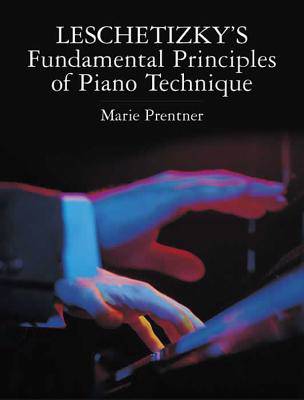
- Afhalen na 1 uur in een winkel met voorraad
- Gratis thuislevering in België vanaf € 30
- Ruim aanbod met 7 miljoen producten
- Afhalen na 1 uur in een winkel met voorraad
- Gratis thuislevering in België vanaf € 30
- Ruim aanbod met 7 miljoen producten
Zoeken
Omschrijving
Polish-born prodigy Theodor Leschetizky (1830-1915) studied with Carl Czerny and went on to an international career as both a pianist and conductor. His greatest fame lies in his teaching method: the most celebrated piano instructor of his era, he taught at the St. Petersburg Conservatory and later in Vienna. His students included such luminaries as Ignacy Paderewski and Artur Schnabel.
Another of the great teacher's prize students, Marie Prentner, recorded the principles and techniques of the celebrated Leschetizky Method. Authentic and complete in its presentation, Prenter's guide features numerous illustrations, exercises, and examples from piano literature. The two-part treatment begins with explanations of hand and finger positions and proceeds to discussions of the pianist's touch, covering such topics as diatonic and chromatic scales; trills, chords, and arpeggios; double notes, thirds, and sixths; and octaves. The second part focuses on musical performance, offering advice on playing Bach and Handel, and explaining the fundamentals of rhythm, pedaling, melody, practice techniques, and musical culture.
Difficult to locate in the past, this legendary manual promises to assist and enlighten a new generation of students and teachers.
Another of the great teacher's prize students, Marie Prentner, recorded the principles and techniques of the celebrated Leschetizky Method. Authentic and complete in its presentation, Prenter's guide features numerous illustrations, exercises, and examples from piano literature. The two-part treatment begins with explanations of hand and finger positions and proceeds to discussions of the pianist's touch, covering such topics as diatonic and chromatic scales; trills, chords, and arpeggios; double notes, thirds, and sixths; and octaves. The second part focuses on musical performance, offering advice on playing Bach and Handel, and explaining the fundamentals of rhythm, pedaling, melody, practice techniques, and musical culture.
Difficult to locate in the past, this legendary manual promises to assist and enlighten a new generation of students and teachers.
Specificaties
Betrokkenen
- Auteur(s):
- Uitgeverij:
Inhoud
- Aantal bladzijden:
- 96
- Taal:
- Engels
- Reeks:
Eigenschappen
- Productcode (EAN):
- 9780486442792
- Verschijningsdatum:
- 6/05/2005
- Uitvoering:
- Paperback
- Formaat:
- Trade paperback (VS)
- Afmetingen:
- 213 mm x 281 mm
- Gewicht:
- 226 g

Alleen bij Standaard Boekhandel
+ 35 punten op je klantenkaart van Standaard Boekhandel
Beoordelingen
We publiceren alleen reviews die voldoen aan de voorwaarden voor reviews. Bekijk onze voorwaarden voor reviews.











